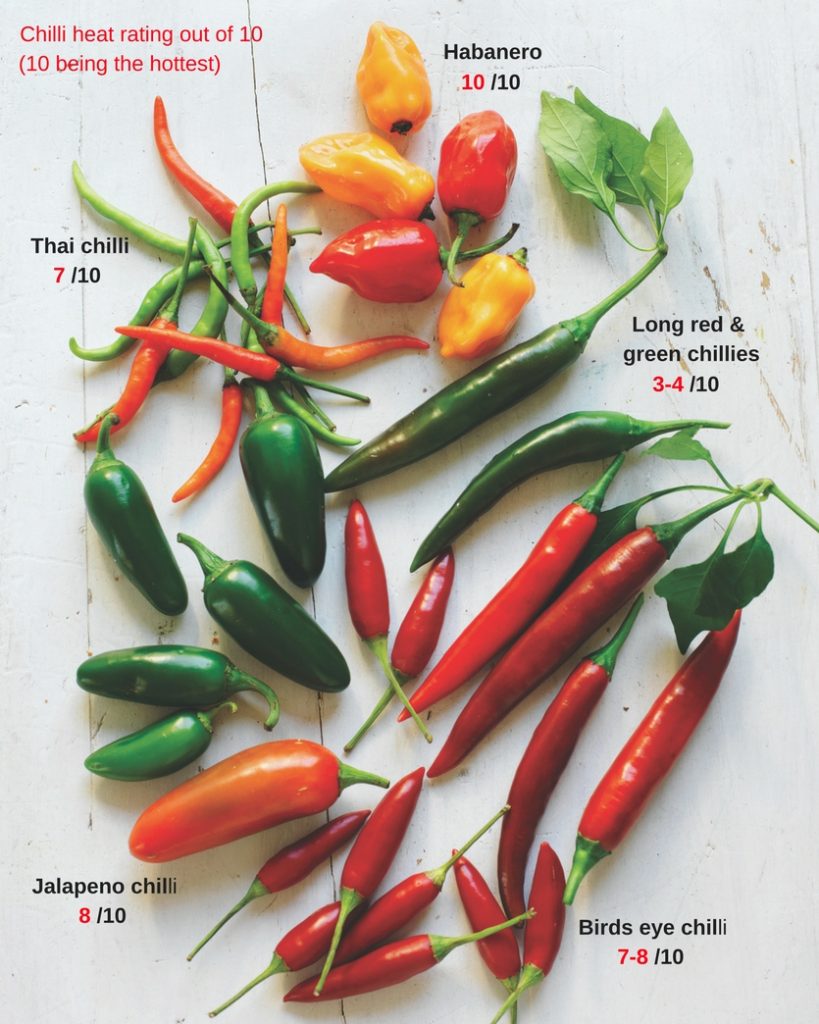Chillies are hot right now! And I am not just talking flavour. They are one of the top-selling plants for edible gardens. A selection of homegrown chillies provides a range of spicy flavours to use in the kitchen, while the plants are decorative in the garden or a pot.
Varietal names often indicate their Central and South American origins and heat. Chilli fruits may be green, red, yellow, orange or even purple in colour and vary from small and round to long and skinny.
Colour, shape, and size however, are no indication of heat. Always read the label of your chilli plant which will clearly advise whether you’re buying a mild, medium, or hot chilli. You can also look up the chilli variety using the international guide of Scoville heat units (SHU), which reflects levels of capsaicin. The SHU should be taken as a guide only as growing conditions and fruit maturity also affect how much capsaicin is in the chilli and how hot it tastes. As a guide a capsicum has no heat units, a Jalapeno chilli is rated from 2500-8000 SHU while the Habanero is 100,00-350,00 SHU.

Capsaicin is found in the skin, juice, and seeds, so always wash your hands carefully after harvesting or preparing chillies and avoid touching your eyes or mouth until after you’ve washed your hands.
Children are attracted to the bright colours of chillies in the garden and suffer severely if they pick or eat a chilli. For safety, keep chilli plants well out of reach of children, for example in the centre of a raised garden bed, in an elevated pot or well fenced.
Chillies are in the Solanaceae family along with tomatoes and potatoes. They grow best through the warmer months of the year (spring to autumn) but continue to grow through winter to resume flowering and fruiting the following spring. They are frost-sensitive, especially when small.
They can be grown in a garden bed or in a container selecting a pot that’s at least 25-30cm wide or a trough for good growth. Chillies are sold as seed, seedling or as small plants and they are best planted from spring to summer. Dig lime to the soil before planting to reduce problems with calcium deficiency such as blossom end rot, which can occur as fruit matures.
As they have a strong branch structure, they do not need staking although a stake gives extra support in an exposed, windy situation, or if the branches are brittle and heavily laden with fruit.
When the weather warms, chillies begin to flower then form fruit. Keep plants well-watered as they grow – water daily when it is hot and dry – and protect small plants from slugs and snails.

Aphids and whitefly also attack chillies. Control these pests with sticky yellow traps or an organic insecticide registered for edible plants such as Eco Neem, Natrasoap or a pyrethrum product such as Nature’s Way Bug Gun (from Yates).
Large fruit may also be attacked by fruit fly. Use a fruit fly lure and bait to reduce fruit fly damage.
Feed plants once they’ve begun to bloom. Apply a complete fertiliser every six weeks, or liquid feed potted plants fortnightly.
Use secateurs or scissors to harvest ripe fruit to avoid breaking the branches and a reminder, always wash your hands well after harvesting chillies to avoid burning sensitive skin. Harvest chillies as they are needed. Preserve bountiful crops by drying, freezing, or plaiting into an attractive and useful kitchen decoration. Lightly prune plants to encourage new growth.
Caitlin
Wingham Nursery & Florist
02 6553 4570
Find us on Facebook
